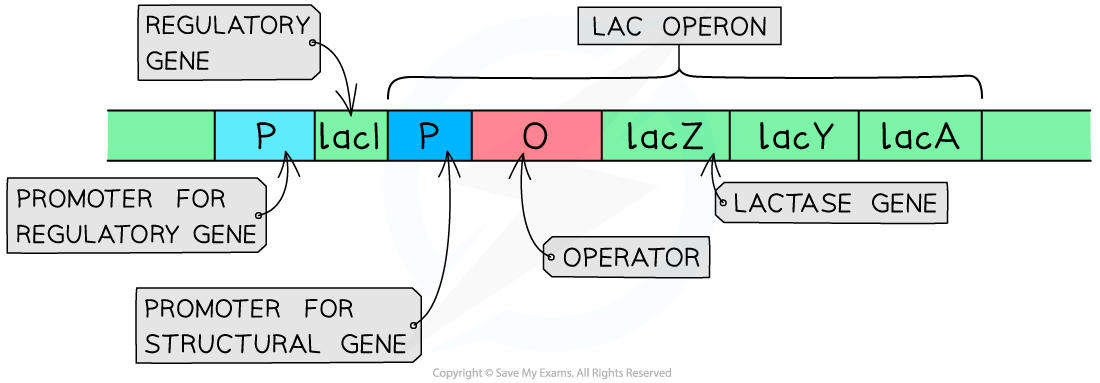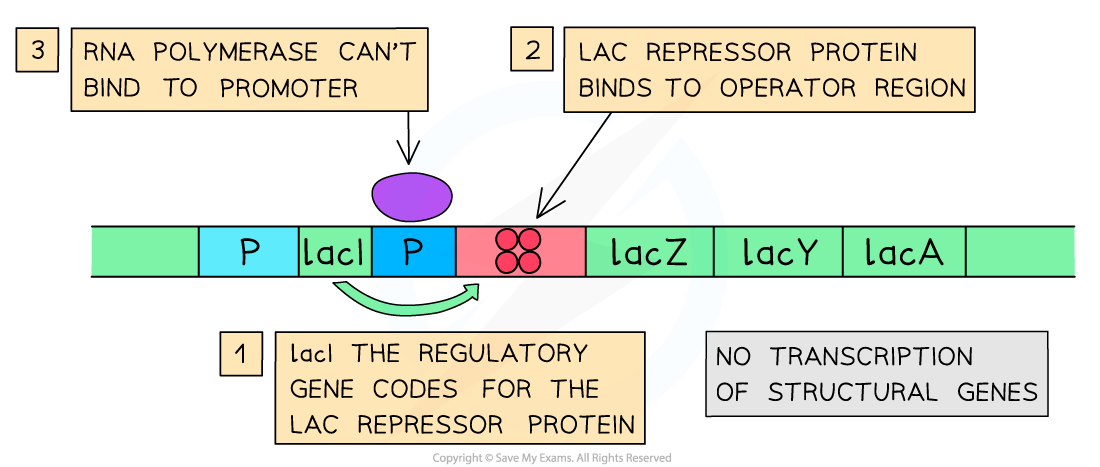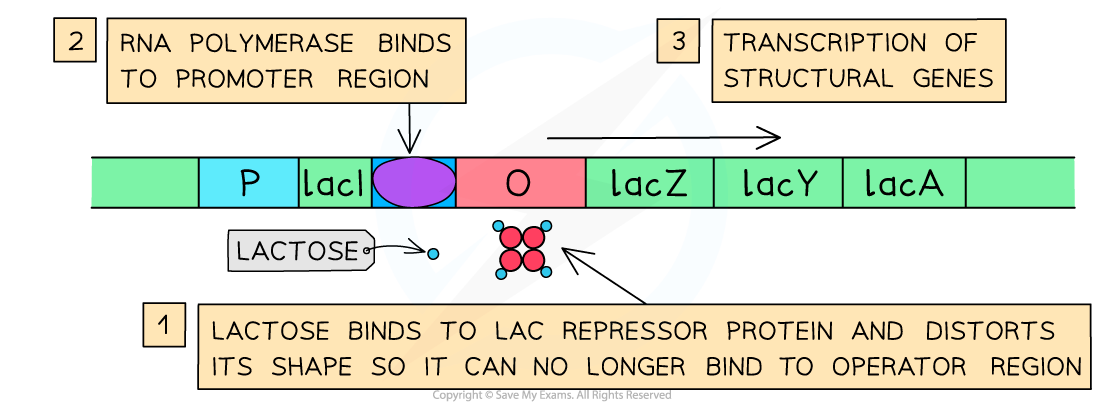Gene Control: Lac Operon (Cambridge (CIE) A Level Biology): Revision Note
Exam code: 9700
Gene control: lac operon
Regulatory genes control structural genes and their levels of protein production
Regulatory genes sometimes have control over several structural genes at once
Structural genes in prokaryotes can form an operon: a group or a cluster of genes that are controlled by the same promoter
The lac operon found in some bacteria is one of the most well-known of these
The lac operon controls the production of the enzyme lactase (also called β-galactosidase) and two other structural proteins
Lactase breaks down the substrate lactose so that it can be used as an energy source in the bacterial cell
It is an inducible enzyme that is only synthesised when lactose is present
This helps prevent the bacteria from wasting energy and materials
Structure of the lac operon
The components of the lac operon are found in the following order:
Promoter for structural genes
Operator
Structural gene lacZ that codes for lactase
Structural gene lacY that codes for permease (allows lactose into the cell)
Structural gene lacA that codes for transacetylase
Located to the left (upstream) of the lac operon on the bacterium's DNA there is also the:
Promoter for regulatory gene
Regulatory gene lacI that codes for the lac repressor protein
The lac repressor protein has two binding sites that allow it to bind to the operator in the lac operon and also to lactose (the effector molecule)
When it binds to the operator it prevents the transcription of the structural genes as RNA polymerase cannot attach to the promoter
When it binds to lactose the shape of the repressor protein distorts and it can no longer bind to the operator

When lactose is absent
The following processes take place when lactose is absent in the medium that the bacterium is growing in:
The regulatory gene is transcribed and translated to produce lac repressor protein
The lac repressor protein binds to the operator region upstream of lacZ
Due to the presence of the repressor protein RNA polymerase is unable to bind to the promoter region
Transcription of the structural genes does not take place
No lactase enzyme is synthesized

When lactose is present
The following processes take place when lactose is present in the medium that the bacterium is growing in:
There is an uptake of lactose by the bacterium
The lactose binds to the second binding site on the repressor protein, distorting its shape so that it cannot bind to the operator site
RNA polymerase is then able to bind to the promoter region and transcription takes place
The mRNA from all three structural genes is translated
Enzyme lactase is produced and lactose can be broken down and used for energy by the bacterium

Examiner Tips and Tricks
The example above explains how the genetic control of an inducible enzyme works. You could get some questions on the genetic control of repressible enzymes.
In this mechanism an effector molecule also binds to a repressor protein produced by a regulatory gene. However this binding actually helps the repressor bind to the operator region and prevent transcription of the structural genes. So it's the opposite of the lac operon: when there is less of the effector molecule, the repressor protein cannot bind to the operator region and transcription of the structural genes goes ahead, meaning the enzyme is produced.

Unlock more, it's free!
Did this page help you?